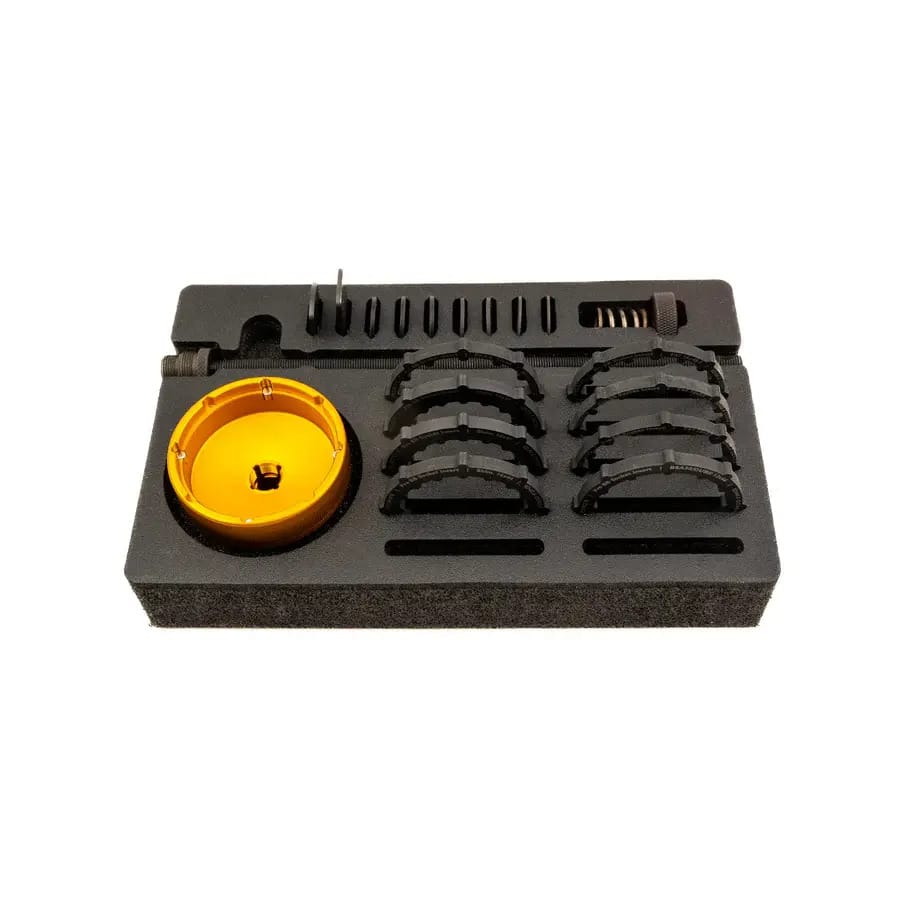Most bike mechanics have likely noticed that they need a wide variety of the same tools to work on the different bikes that come through the door. Take a look around a workshop, and you'll probably see at least two dozen tools just for removing a bottom bracket, as well as numerous fittings to bleed various types of brakes. Recently, Pedro's announced a new tool designed to replace the need for owning a full set of bottom bracket tools. The tool achieves this by featuring a large, oversized socket with an interchangeable hardened steel ring that adapts to fit different bottom bracket standards. This new tool would be especially useful if you're building a new workshop or are limited on tool storage space. For this reason, I could see it becoming a common sight in mobile bike shops. Upon reflecting on this new tool, I think it could symbolize the growing trend in the bike industry toward increased simplicity for mechanics.

It makes sense that the bike industry has evolved with so many different tool interface standards. Early on, the original makers of bike components didn’t have the luxury of building off any existing standards, so they naturally developed their own. Over the years, the evolution of bikes has been fast and constant, which explains why we haven’t yet settled on a single tool interface for many components. Some innovations simply wouldn’t have been compatible with an existing standard, so the industry had no choice but to create a new standard and the tools to match.
Now, the bike industry has settled on most standards, making this an ideal time for further standardization of tool interfaces to make mechanics' lives easier. One area where we've seen this standardization is with cassette lockrings. Cassettes have settled on a standard form factor, so all bikes that use a cassette have a lockring that uses the same tool. This means that mechanics can grab the right tool and know it will work. There are good reasons for other components to adopt similar standardization.
It's in a component manufacturer's best interest to make their products easy and simple to work on. Bike mechanics have significant influence over the parts their customers choose, and they’re less likely to promote a part if it requires a special tool for installation. One of the best examples of this is Chris King's threaded bottom brackets, which use a tool with a slightly different number of notches on the interface, making it incompatible with more common tools.
I do have a few guesses as to why some brands, like Chris King, may choose to be different and not use more common tools. Firstly, these brands may have developed a "switching cost," meaning a customer is essentially locked into using the same brand because they've already invested in the tools needed to service that brand's components. So when they need to replace a part, they may also need to buy new tools if they switch brands. An example of this is if a home mechanic buys the tools required to bleed Shimano brakes, they're more likely to stick with Shimano for their next set of brakes because the tools are compatible. Another reason some brands may choose to require proprietary tools is that it can give the brand an air of exclusivity. This might be why Chris King continues to use specialized tool interfaces.
Hopefully, as an industry, we can overcome the hurdle of parts that require unique tools. The fact that Pedro's took the time to develop a tool that simplifies dealing with various bottom bracket standards shows there’s a desire for simplicity. I know that if bottom brackets, brake bleed ports, and other components follow the cassette lockring model and settle on a standardized tool interface, it would make my life and many other mechanics' lives much easier.
